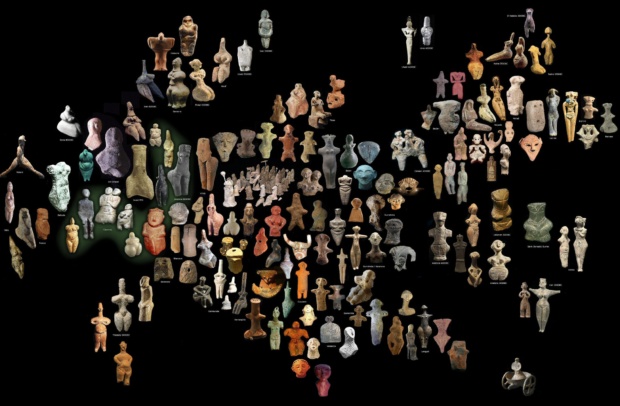One important stop on our journey: Vinca Culture, The Danube Script or The Lost World of Old Europe
The Vinca culture, also known as Turda-Vinca culture, is a Neolithic archaeological culture in South-eastern Europe, dated to the period 5,700–4,500 BC.
Archaeologists concluded that “in the 5th and early 4th millennia BC, just before its demise in east-central Europe, ‘Old Europeans’ had towns with a considerable concentration of population, temples several stories high, a sacred script, spacious houses of four or five rooms, professional ceramicists, weavers, copper and gold metallurgists, and other artisans producing a range of sophisticated goods. A flourishing network of trade routes existed that circulated items such as obsidian, shells, marble, copper, and salt over hundreds of kilometres.”

The Vinca culture flourished from 5,500 (2) to 3,500 BC (4) on the territories of what is now Serbia, Romania, Bosnia, Bulgaria and Macedonia. It got its name from the present-day village of Vinca, 10 km east of Belgrade on the Danube river, where over 150 Vinca settlements have been determined. There is no evidence of war or defences in the townships, and it appears that the Vinca were a peaceful society combining low-level agriculture with foraging and trade. They produced the first known European examples of a ‘proto’-script and were the first people in the world known to smelt copper. They existed in a similar state for almost 2,000 years, following which they appear to have dispersed around the Mediterranean and Aegean.


